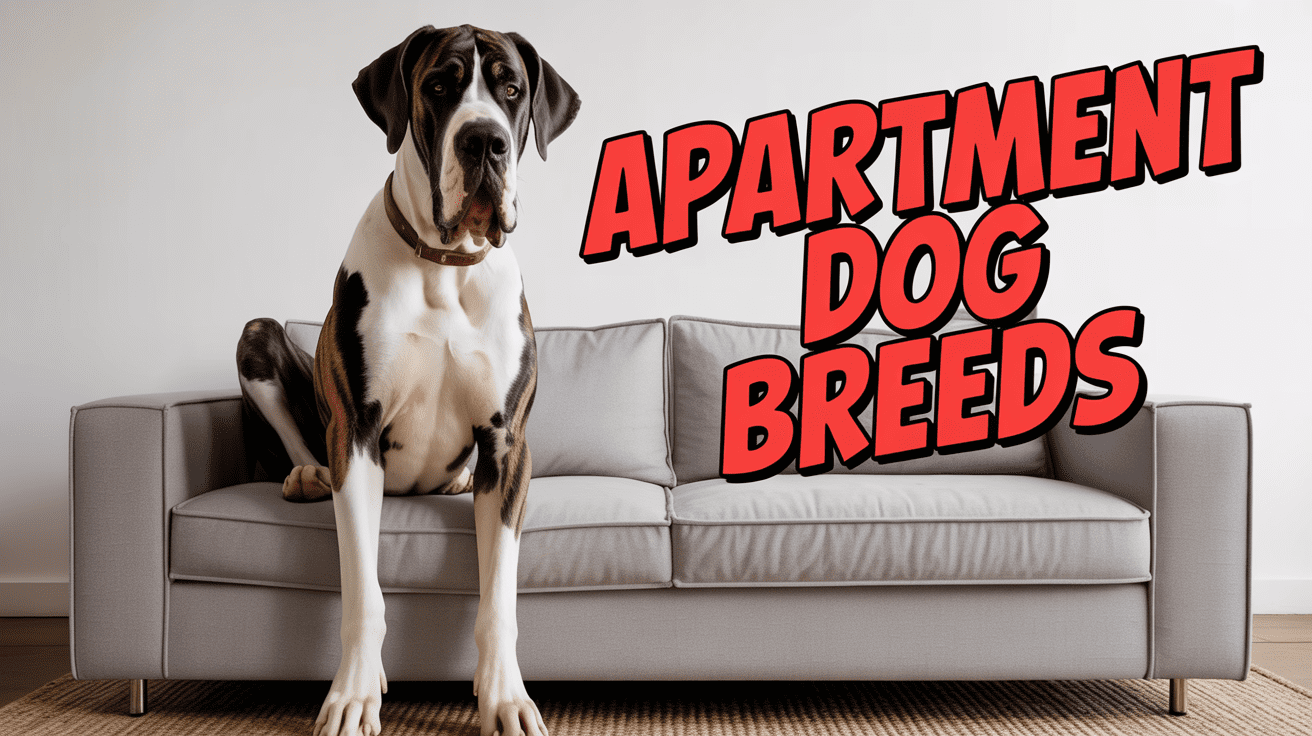
Newsletter Subscribe
Enter your email address below and subscribe to our newsletter

Enter your email address below and subscribe to our newsletter

You’ve found it. It’s the perfect apartment, your dream house. However, you find out that your beloved dog isn’t welcome to stay there because of their breed. That’s just frustrating.
Now, the dog breeds restricted by apartments aren’t exactly too concerned about your canine’s temperature as you might think. It’s more about insurance guidelines, liability risks, and long-standing stereotypes.
Even though smaller dogs are usually more aggressive compared to breeds like Pit Bulls, Rottweilers, and Dobermans, the latter are more often seen on restricted lists than the former. You can’t argue your way through saying that “My dog isn’t aggressive at all.”
If you’re thinking of paying extra deposits to bypass the rules, don’t. More often than not, the restrictions are also tied to insurance policies. That means the landlords cannot override them even if they wish to help you out.
Another layer of complication to this entire situation is the issue of misidentification. If your mix-breed dog happens to resemble a restricted breed, they might still be banned from entering your new place.
But rest assured, your service animals and emotional support animals can usually get a pass. So, understand your legal rights and identify the common misconceptions to help you better navigate this landscape.

Apartment dog breed restrictions are rules set by landlords, property managers, or housing associations. These rules determine which types of dogs you, as a tenant, can keep in the rented space. They are usually detailed in your lease agreement and are legally binding once you sign it.
At their core, apartment breed restrictions are meant to manage risks. From the perspective of the owners and insurers, they just want to minimize the potential liability and damage done to the property.
These rules are also often done in consideration of neighbor complaints. However, that’s usually not the main concern (or at least, doesn’t seem like it). You may find that these restrictions don’t always align with a dog’s true temperament or behavior.
Most restrictions are concerned about your dog’s breed rather than their size. But some landlords do take into account weight limits, too. As an example, you might see a large but docile breed like Greyhounds getting accepted into apartments. However, a calm Rottweiler with years of training can still be restricted because of the perceived risks tied to their breed.
This can be quite confusing to us tenants who think that “big dogs” are usually the ones that are banned. So, there’s a need for you to really review the pet policy before signing the lease. You don’t want to be paying fines, getting evicted, or worse, surrendering your pet later.

Now, you might think that apartment dog breed restrictions seem arbitrary or even unfair. From our perspectives as tenants, it certainly looks like it. But there’s a deeper reason behind the rules, and that ties in to liability.
Property managers and landlords will usually have to follow the guidelines set by their insurance providers. This means the former parties are often not in full control of the rules. And the latter typically has a direct impact on the restricted dog list for apartments.
You should know that these insurers assess risk based on historical claims data. So, if a certain breed is shown statistically to damage properties or bite more often, they are considered a “high-risk” breed.
The prohibition is meant to protect the insurer as the party that covers the cost of damage. In turn, your landlord adopts the rules to safeguard themself legally and financially.
For example, if you violate an apartment breed restriction and your dog happens to damage the property, your landlord could lose insurance coverage or even face steep liability costs. This will usually come back to bite you in the form of increased deposits, mandatory insurance, or outright denial of housing.
Veterinary and animal welfare experts say that these rules are outdated and do not consider the modern training our dogs receive and behavioral science. Still, from a landlord’s perspective, the cost of ignoring insurer guidelines outweighs the risks of enforcement.

Now, you might be wondering if your dog’s breed is under the “usual suspects” list. Some of the most common dog breeds restricted by apartments include Pit Bulls, Rottweilers, Doberman Pinschers, German Shepherds, Chow Chows, and Akitas. They are usually banned because of their size, strength, and historical use as guard or protection dogs.
Let’s take a closer look at each case:
In some cases, you might find larger breeds like Mastiffs, Great Danes, or Huskies being included in the restricted dog list for apartments as well. Mastiffs are massive and intimidating. Great Danes are giant, though usually docile. Huskies are (in general) energetic and can be quite the escape artists, with a history of property damage.
Also, don’t assume that your mixed-breed dog won’t be affected. If your canine pal resembles a restricted breed, your landlord might still ban them from entry. It’s a difficult situation for us tenants. So, remember to read the written list of apartment breed restrictions thoroughly before you sign the lease.
You should know that not all dog breeds restricted by apartments apply universally. And one of the biggest exceptions involves service animals and emotional support animals (ESAs).
If you’re living in the U.S., know that the federal housing laws require your landlord to make reasonable accommodations for these animals. That means even if your dog’s breed is on the restricted list, they can still stay with you. These animals are important for your health and well-being, after all.
Let’s not get them confused, as service animals and ESAs are not the same. A service dog is specially trained for people with disabilities to do certain tasks. These may include guiding the blind or detecting seizures.
On the other hand, an emotional support animal is meant to provide comfort and emotional stability for your mental health conditions. So, they don’t really need specialized task training.
While they are both protected, you’ll need to take different approaches to get them into your new home. For your service animal, as long as you’re truly disabled, and your dog is required to help with your daily proceedings, then no further documentation is needed other than your (the tenant’s) disclosure.
As for ESAs, you’ll need to provide a letter from a licensed healthcare professional. The letter should state that you have a mental or emotional disability and that you need your dog for support. Without this document, your landlord can still reject your dog’s stay.
Take note that your landlord is not allowed to charge pet deposits, monthly pet rent, or additional fees for service animals or ESAs. But don’t try to take advantage of the system. If you have an ESA, especially, secure your letter rather than talking your way in.
Vet professionals also recommend that we communicate with our landlords to make the necessary arrangements for our dogs, if needed. Large service dogs, for example, will need more exercise, training, and environmental enrichment to thrive in a small apartment.
The internet is flooded with fraudulent websites selling “instant ESA certifications” to anyone willing to pay a fee. These scams prey on desperate pet owners facing housing restrictions, but using fake documentation can result in eviction and legal consequences.
Legitimate ESA letters must come from licensed mental health professionals (psychiatrists, psychologists, licensed social workers, or licensed counselors) who have an established therapeutic relationship with you. Red flags of ESA scams include instant approvals after brief questionnaires, promises to “register” your animal in official databases (no such registry exists), and extremely cheap or expensive fees compared to legitimate providers.
Websites offering ESA “certificates” or identification cards are particularly misleading, as the only legally recognized documentation is a letter from a qualified mental health professional. Landlords are increasingly aware of these scams and will reject fraudulent letters, potentially leading to housing denial or eviction proceedings.
You might have been one of those who assumed that only “dangerous” canines make the restricted dog list for apartments. Such a misconception usually catches tenants like us off guard. So, it’s best to understand some of these pitfalls to avoid future issues.
The first myth out there is that all large dogs are restricted. Yes, weight limits do exist in some properties. And there are indeed dogs that are restricted because of their large size. But most restrictions actually center around the specific breeds and their associated risks. So, you might see a large but gentle breed, like Great Danes or Greyhounds, being permitted to stay.
Another belief is that your landlord can’t enforce these restrictions if your dog is well-behaved. Unfortunately, even your calmest German Shepherd can be banned as long as it’s on the list. If you sign the paper, you’re responsible for abiding by the rules.
If you think that paying higher deposits or pet rent can bypass these restrictions, you’re quite mistaken. Most of the time, the breed restrictions are tied to the insurance requirements. That means even if your landlord wants to, he can’t really waive (unless he wants to risk bearing the full cost of any damage done by your dog).
The last one is about mixed-breed dogs. If your canine friend resembles a restricted breed, your landlord might deny approval. Don’t assume they care much about your pet’s genetic makeup. Sometimes appearance itself is good enough for them, even if it means misidentification.
Now, let’s talk about your legal rights and responsibilities tied to apartment breed restrictions. Don’t think that you can bend the rules just because your dog’s friendly and well-trained. Housing laws can be very precise.
From the rights perspective, if you own a service animal or an ESA, your landlord cannot deny housing based on breed alone. But make sure you prepare the proper documentation for ESA. Don’t mistake your verbal confirmation as a “free pass.”
You may refer to laws such as the Americans with Disabilities Act (ADA) and the Fair Housing Act (FHA) if you’re living in the U.S. If you own a restricted breed, it’s best to directly talk to a legal counsel or advocacy group that is familiar with housing laws. See what options you can opt for then.
Beyond that, your responsibilities are just as important. As a tenant, you must comply with the terms of your lease. The main thing is to prevent your dog from causing safety or nuisance issues for your neighbors.
If your dog barks a lot, damages properties, or is aggressive, your landlord can still terminate your lease. That applies even if your canine friend is not among the restricted breeds.
Also, you should take note that your landlord may legally require you to pay pet deposits or renters’ insurance (unless your dog is either a service animal or an ESA). Budget for the extra costs so that you won’t be caught off guard.
If your dog’s breed appears on an apartment’s restricted list, don’t give up hope. Here’s your comprehensive battle plan to navigate or potentially challenge these restrictions:
Step 1: Vet Your Dog & Gather Evidence. Go beyond basic veterinary records by obtaining an AKC Canine Good Citizen (CGC) certification. This nationally recognized program evaluates dogs on ten behavioral criteria including accepting strangers, sitting politely for petting, and walking on a loose leash. The CGC serves as tangible, third-party validation of your dog’s temperament and training, providing concrete evidence that your individual dog defies breed stereotypes.
Step 2: Build the Ultimate “Pet Resume”. Create a comprehensive portfolio that includes your CGC certificate, complete vaccination records, microchip identification, spay/neuter documentation, and a detailed biography highlighting your dog’s calm temperament and positive interactions. Include written references from previous landlords, neighbors, veterinarians, and dog trainers who can attest to your dog’s behavior and your responsible ownership.
Step 3: Propose a “Pet Interview” or Trial Period. Suggest arranging a meet-and-greet between your dog, the landlord, and property manager in a neutral space. Offer to sign an enhanced “Pet Addendum” that holds you to higher standards of liability and includes specific behavioral commitments, demonstrating your confidence in your dog’s temperament.
Step 4: Address the Insurance Hurdle Head-On. Come prepared with solutions to the landlord’s primary concern: liability coverage. Offer to purchase an additional umbrella liability policy ($1-2 million coverage) that specifically names the landlord as an additional insured party. This removes their financial fear by providing protection beyond standard renters insurance limits, covering potential legal costs and damages.
Step 5: Know Your Legal Exemptions (ESAs/Service Animals). If you have a legitimate emotional support animal (ESA), obtain proper documentation from a licensed mental health professional with whom you have an established therapeutic relationship. Avoid ESA websites that offer “instant approvals” or claim to “register” your animal, as these are scams that landlords increasingly recognize. Legitimate ESA letters require ongoing professional evaluation and cannot be obtained instantly.
Step 6: Escalate Strategically. If denied accommodation despite valid ESA documentation, formally state in writing that this may constitute a violation of the Fair Housing Act. Contact local tenant advocacy groups, fair housing organizations, or legal aid services that specialize in housing discrimination. Document all communications for potential legal proceedings.
You probably feel like you’re walking through a legal maze just trying to move into a new apartment with your dog. The key to getting it right is to navigate these rules with clarity and preparation. Let’s take a look at what you need to do.
The first step is transparency. You should always let your landlord know your dog’s breed and size. Provide them with any relevant documentation up front. Don’t try to hide. If your landlord catches you violating the rules, you risk getting evicted, or you might face other steep penalties.
You should also budget for added costs. These include pet deposits, monthly pet rent, or proof of renters’ insurance. They can feel like a burden. But it’s often more worthwhile than having to go through legal issues during your stay.
The next thing you need to be mindful of is to read the fine print. There are many policies out there that include additional restrictions like weight limits, or there might be a line saying aggressive breeds prohibited. The latter is quite vague, so seek clarification.
Ask for a restricted dog list for apartments in writing. Get your landlord to answer questions about mixed breeds.
Vet professionals also advise that you prepare a “pet resume.” This should include details like vaccination records, proof of training, and references from past landlords. You can really demonstrate responsible ownership. And on very rare occasions, this might even get the property manager to consider exceptions.
We understand that it is very frustrating to have to work your way around restrictions on dog breed restrictions, and confusion is certainly common. Tenants such as ourselves often hear conflicting information about what’s allowed, what’s banned, and whether exceptions exist. To clear the air, we’ve gathered some of the most frequently asked questions on this topic.
No, not every dog thrives in an apartment. You’ll need to consider your dog’s temperament, energy level, and space needs. It’s not just about the breed.
Your landlord often restricts dogs to avoid noise complaints, property damage, and liability issues tied to insurance policies.
You may find breeds like French Bulldogs, Pugs, and Cavalier King Charles Spaniels to adapt especially well to smaller spaces.
Pit Bull is probably at the top of the restricted dog list for apartments. They are followed by breeds like Rottweilers and Dobermans.
You should check your lease agreement or request the restricted list in writing. Your landlord may also judge by appearance, which can create challenges for mixed breeds.
Most of these policies target specific breeds, set weight limits, or prohibit mixes that are perceived as aggressive.
Yes. Federal housing laws do protect service animals and ESAs, even if they belong to restricted breeds.
The concern is usually about space and property damage, though temperament matters more than size in reality.
Insurance companies usually blacklist certain breeds. Then, your landlord will likely adopt those restrictions to avoid higher premiums or policy cancellations.
Sometimes. With service animals, ESAs, or under local housing laws, you may appeal unfair restrictions.
All in all, you should understand now that these apartment breed restrictions aren’t out there to punish us pet parents. Your landlord is trying to manage liability, control costs, and comply with insurance rules.
On your end, take the time to verify the restricted dog list before signing a lease, always. Be aware of hidden costs, like added deposits or renters’ insurance. And remember that your service animal and ESA are protected under the law.
Now, you should be aware of the nuances surrounding this issue and know how to prepare for it. Apply what you’ve learned. And you are sure to be able to avoid costly mistakes, prevent disputes with your landlord, and keep your dog safely by your side.
Has your pet ever been restricted before when you were trying to rent an apartment? Share your experience in the comments below! Tell us how you handled it.